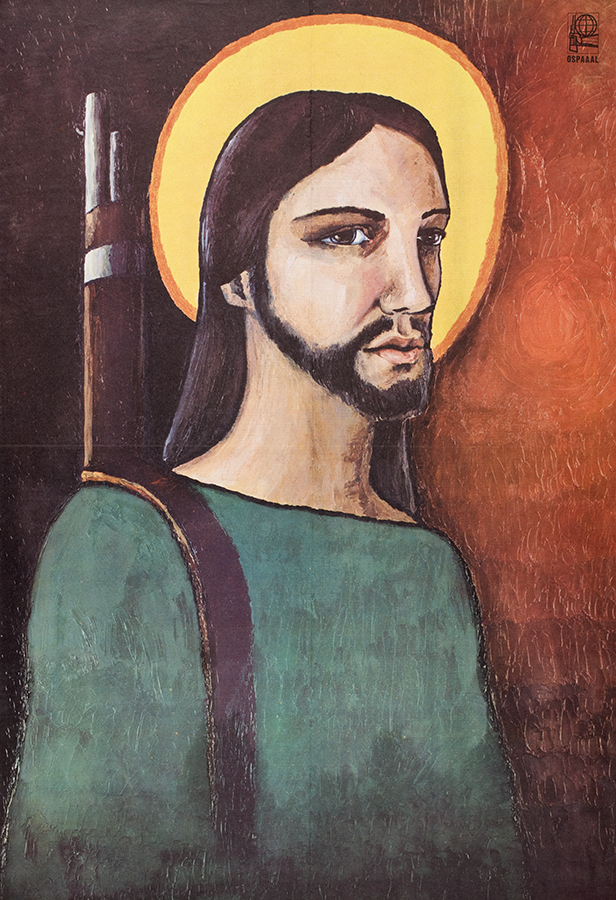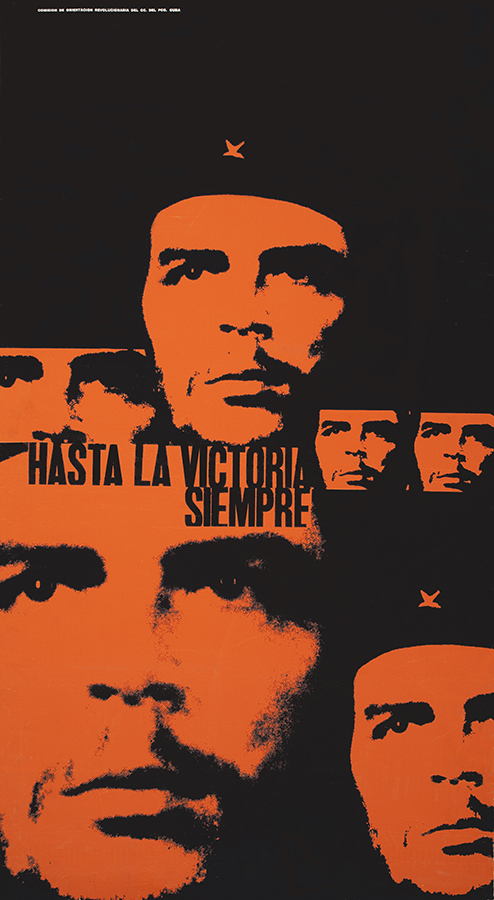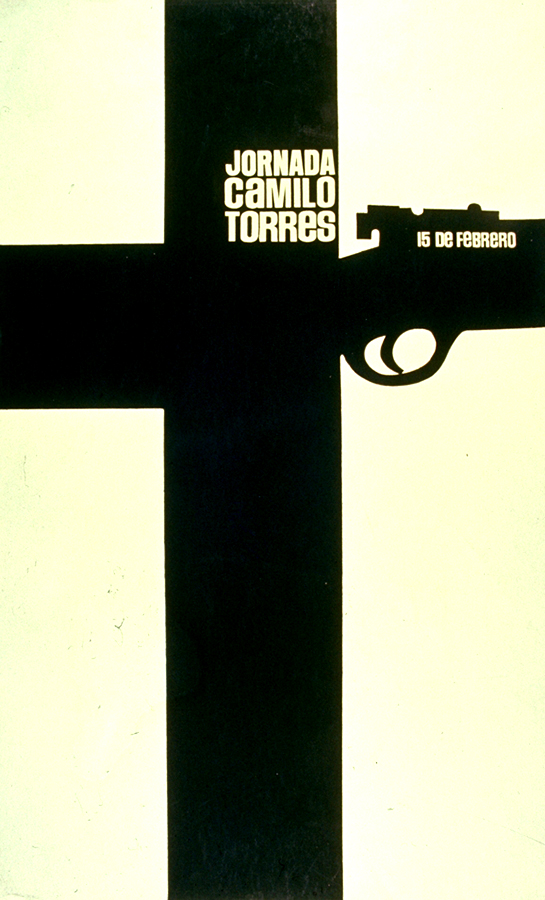Chesucristo: The fusion in image and word of Che Guevara and Jesus Christ.
David Kunzle (DeGruyter, 2016).
In February 2018 the Center for the Arts and Religion at the Graduate Theological Union (a consortium of eight private independent American theological schools) near the University of California, Berkeley, mounted a powerful exhibition, “Religion and Resistance.” The gallery director Elizabeth S. Peña noted that “We consider religion as a locus of dissent and an impetus for collective action.” Two posters on display supporting this thesis were from Cuba, a Latin American country with a deep Catholic history (although currently the least Catholic country in Latin America) and a strong international presence as an agitator for a better world. The relationship between religion and resistance warrants more examination.
 Despite
the fact that Che Guevara (born in Argentina, but forever associated
with the Cuban revolution and beyond) was an atheist, Chesucristo
offers a definitive examination of the symbolic and iconic connections
between these two historic figures.
Despite
the fact that Che Guevara (born in Argentina, but forever associated
with the Cuban revolution and beyond) was an atheist, Chesucristo
offers a definitive examination of the symbolic and iconic connections
between these two historic figures. Kunzle, an eclectic scholar (ranging from Victorian fashion to 19th century comic strips to 17th century Flemish painting), first broached this approach when he curated the 1997-1998 exhibition Che Guevara: Icon, Myth, and Message at the University of California, Los Angeles’ Fowler Museum of Cultural History. In the catalog for that exhibition his chapter “Chesucristo: The Christification of Che” opens by pointing out that
“From the perspective of historical probability, as opposed to millennial myth, there are more similarities between Ernesto Che Guevara and Jesus Christ, and between Latin America in the twentieth century and Galilee in the first century, than conventional (Christian) scholarship would allow.”Other portions of the exhibition further explored this relationship, but this was just taste of the breadth of knowledge and depth of analysis Kunzle brings to the current volume.
Kunzle’s newest work carves out a very specific turf. He explains in the preface:
“This is not a biography of either Che or Jesus; rather, it is a highly selective biography of the two myths about them and a considerable iconography joining them. As it seeks to modify the ideal and unhistorical view of the God-man Jesus, it tends to bring into being an ideal supra-historical man-God Che. This will worry some Che scholars…”
 Chesucristo
is lavishly illustrated (257 of them, to be precise), but it’s not
limited to visual imagery. Kunzle draws in examples from film,
literature, and poetry. He even devotes an entire chapter to the
parallels between text from the Gospels and instances connected with
Che – such as 39th verse of the fifth chapter of the Gospel of Matthew
in the New Testament, commonly referred to as “turning the other
cheek.” Che, quoting the Cuban patriot José Martí in 1969, said “A real
man should feel on his own cheek the blow given to another man’s
cheek.”
Chesucristo
is lavishly illustrated (257 of them, to be precise), but it’s not
limited to visual imagery. Kunzle draws in examples from film,
literature, and poetry. He even devotes an entire chapter to the
parallels between text from the Gospels and instances connected with
Che – such as 39th verse of the fifth chapter of the Gospel of Matthew
in the New Testament, commonly referred to as “turning the other
cheek.” Che, quoting the Cuban patriot José Martí in 1969, said “A real
man should feel on his own cheek the blow given to another man’s
cheek.” But the images – photos, posters, paintings, stencils, sculpture, murals, billboards, even tattoos – are the most prolific cultural virus of the spirit of Che Guevara and which make up the bulk of this extraordinary volume. For example, Kunzle examines in great detail what he calls the “Korda matrix” – the instantly identifiable portrait that, reduced to a black-and-white graphic, is instantly recognised the world over.
The original photograph was taken by Korda, whose real name was Alberto Díaz Gutiérrez (1928-2001), on 4 March 1960. Korda was at an event honoring victims of a sabotage explosion of a French freighter in Cuba, attended by luminaries including Fidel Castro, Jean-Paul Sartre, and Simone de Beauvoir. At the time Che was Cuba’s Minister of Industries. It was a quick job for Korda - he only snapped off two photos – and the image wasn’t used for seven years. But sometime in May or June of 1967, when Che was in Bolivia trying to rouse a local revolutionary movement, Korda gave a print to the leftist Italian publisher Giangiacomo Feltrinelli, who published a bare poster – just the photo, without text.
After Che was killed in Bolivia on October 8-9, 1967, Korda’s photo - by now titled Guerrillero heróico – was used for numerous public displays. Soon afterwards, the photograph was simplified into a high contrast image poster by the artist Ñiko (Antonio Pérez González). Ñiko kept the beret with the distorted four-pointed star, assembled a collage of seven of the portraits, and added the famous phrase “Hasta la victoria, siempre!” (Ever onward to victory). It was published by the Cuban Communist Party propaganda department as a large screen print.
The simplified, stylized image took off like wildfire, and variants can be found all over the world. This example is one of many instances where Kunzle draws on a unique knowledge of Eurocentric art historical practices and specific instances of the Che-Christ combo throughout Latin America. This book’s melding of the two is what makes it unique, and offers a model of what future cultural histories might consider.
 But
why Che? Latin America certainly has its share of activist clergy.
Perhaps best known is Óscar Romero, the fourth Catholic Archbishop of
San Salvador during El Salvador’s revolution. Devoted to supporting the
poor and calling out social injustice, he was assassinated while
offering Mass in 1980. Camilo Torres (1929-1966) was a Columbian
socialist and Catholic priest killed on his first armed contact as a
revolutionary. Torres famously said "If Jesus were alive today, He
would be a guerrillero.” But none of these figures has attained the
profound elevation to icon that Che Guevara did - especially
considering his secular position. Kunzle’s book makes provocative
suggestions as to why Che is a special case.
But
why Che? Latin America certainly has its share of activist clergy.
Perhaps best known is Óscar Romero, the fourth Catholic Archbishop of
San Salvador during El Salvador’s revolution. Devoted to supporting the
poor and calling out social injustice, he was assassinated while
offering Mass in 1980. Camilo Torres (1929-1966) was a Columbian
socialist and Catholic priest killed on his first armed contact as a
revolutionary. Torres famously said "If Jesus were alive today, He
would be a guerrillero.” But none of these figures has attained the
profound elevation to icon that Che Guevara did - especially
considering his secular position. Kunzle’s book makes provocative
suggestions as to why Che is a special case.Chesucristo delves into many aspects of this investigation, including the evolution of Liberation Theology, examples of “miracles,” and portrayals of the dead body of Che in art. One chapter is devoted to examining the shared symbology of Jesus and Che, such as the star/halo, the Shroud of Turin, even the use of flower and birds. Kunzle also reflects on the commercialization of Che and the degree to which his message has become diluted and appropriated - not unlike the messaging of Jesus Christ.
This is a master work, relevant to scholars of Latin American revolutionary movements as well as those interested in the boundaries of Liberation Theology. Art historians will also appreciate the exhaustive pursuit of the imagistic connection offered by Kunzle’s superb research and analysis.
Return to Docs Populi - Documents for the Public
All poster images courtesy the author:
Alfredo Rostgaard, 1969, [untitled; generally referred to as Cristo guerrillero] for the Organization in Solidarity with the People of Africa, Asia and Latin America (OSPAAAL, Havana, Cuba)
Antonio Pérez González (Ñiko), 1968, Hasta la victoria, siempre; for the Comision de Orientación Revolucionaria (Cuban Communist Party)
Mario Sandoval, 1971, Days of Remembrance for Camilo Torres, February 15, for Organización Continental Latinoamericana y Caribeña de Estudiantes (OCLAE, Havana, Cuba)